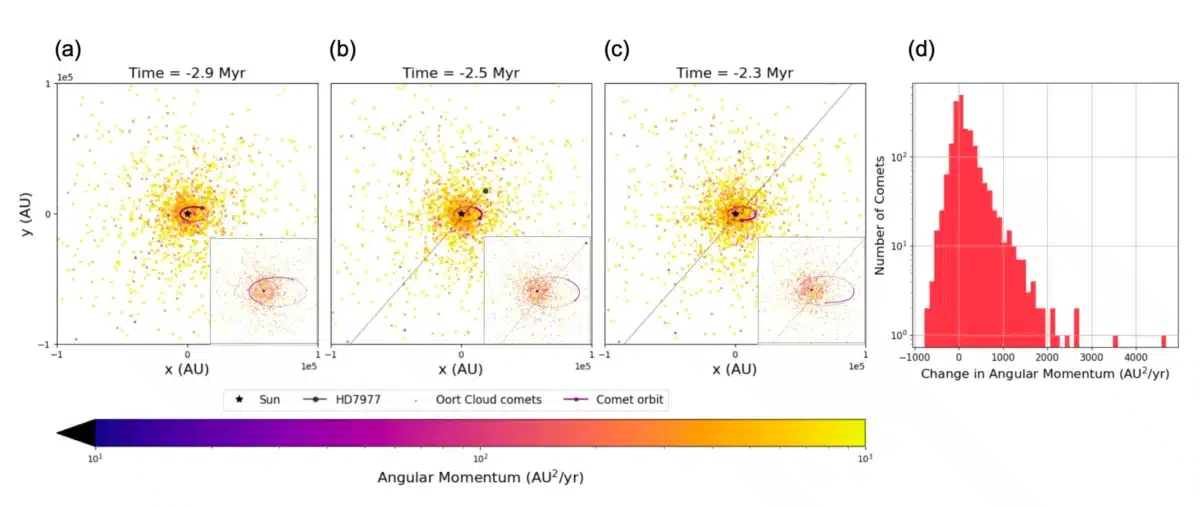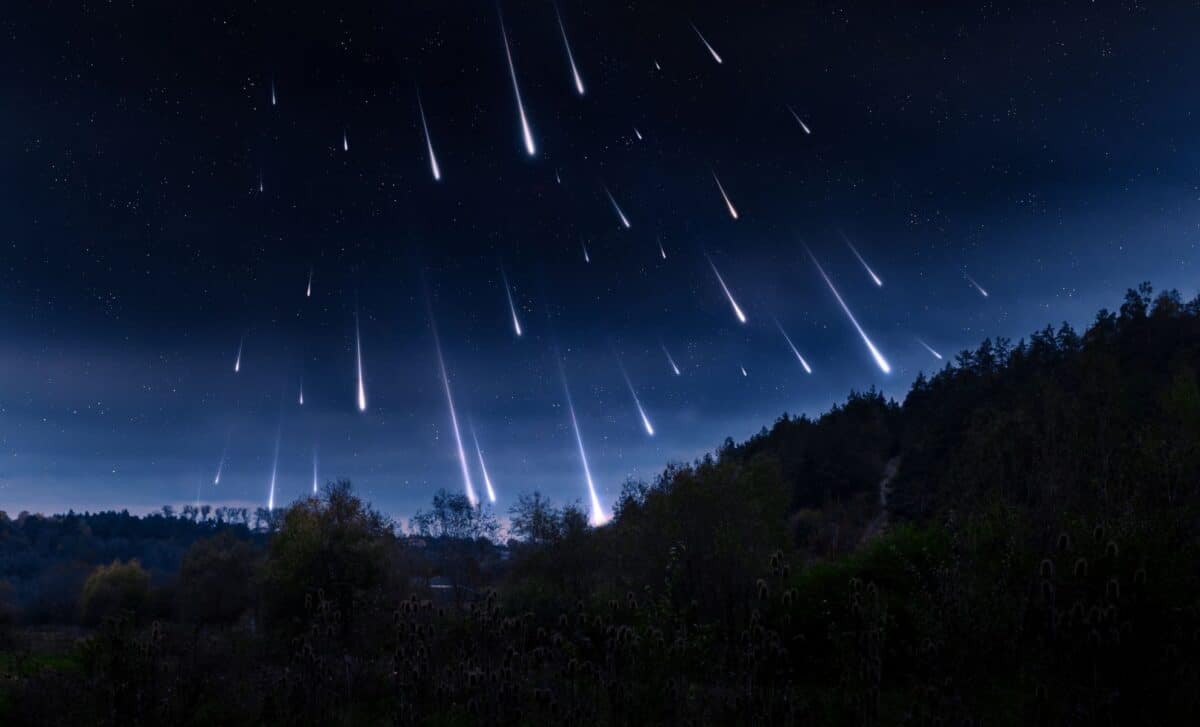New research suggests that the close passage of a nearby star, HD 7977, might have sent comets from the outer reaches of the solar system on a collision course with Earth. This event, happening around 2.5 million years ago, could have contributed to the dramatic climate shifts that shaped the evolution of early humans.
Scientists have long debated what triggered the major climate changes during the Pliocene-Pleistocene transition. A recent study by Avi Loeb, an astrophysicist at Harvard University, proposes a new theory: the passing of a star, HD 7977, could have disturbed the Oort Cloud, a huge, icy region at the edge of the solar system, sending comets toward Earth and potentially sparking a significant comet shower.
What’s the Oort Cloud, and How Can Stars Affect It?
The Oort Cloud is a vast, distant region of icy bodies and comets that extends far beyond the orbit of Pluto. According to the study, when a star passes too close to this region, its gravity can disturb the orbits of the comets, sending them flying toward the inner solar system. Loeb and his team focused on HD 7977, a star that passed close to the Oort Cloud about 2.5 million years ago, around the time humans were first emerging on Earth.
Their research shows that the gravitational pull of HD 7977 could have caused some of the comets in the Oort Cloud to move into the inner solar system. This increase in comet activity could have contributed to significant environmental changes on Earth during the Pliocene-Pleistocene transition, which marked the beginning of the ice ages.
How Did the Star’s Passage Affect the Oort Cloud?
To understand just how impactful this star’s passage might have been, the team ran simulations of HD 7977’s flyby and its effect on the Oort Cloud. The results showed that depending on the star’s distance from the Sun, ranging from about 2,300 to 13,000 AU, the likelihood of comets hitting Earth increased significantly. For the closest approach, at 2,300 AU, the chance of a 1-kilometer-wide comet striking Earth was much higher than usual, suggesting that a comet shower could have occurred.
This research suggests that HD 7977’s flyby may have disrupted the Oort Cloud, sending more comets toward Earth and possibly contributing to the climate changes of the time.
 Panels (a) to (c) show snapshots from a simulation of a passing star’s gravitational effect on Oort cloud comets, with colors representing their angular momentum. Credit: Avi Loeb/Medium
Panels (a) to (c) show snapshots from a simulation of a passing star’s gravitational effect on Oort cloud comets, with colors representing their angular momentum. Credit: Avi Loeb/Medium
Could This Have Affected Human Evolution?
The timing of this potential comet shower is particularly interesting because it lines up with the emergence of early humans. While many experts have pointed to asteroid impacts as the main driver of climate change during the Pliocene-Pleistocene transition, Loeb’s study suggests that a cometary bombardment triggered by a passing star could have had a similar effect.
If a surge in comet impacts did occur, it could have made the Earth’s environment much more unstable, possibly influencing the evolution of early hominins.
While this idea may seem out there, it opens up the possibility that cosmic events could have played a larger role in shaping the planet and even the course of human history. If further geological evidence supports this theory, it could change how we think about the factors that shaped life on Earth.
While this theory may sound far-fetched, it suggests that cosmic events could have had a much bigger impact on Earth’s development and even the rise of humanity.

